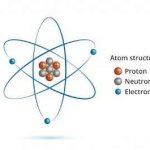Motion is the change in position of an object to its surroundings in a given interval of time.
Motion, in physics, has several definitions depending on the context.
Here are the main ones:
1. Change in position over time: This is the most general definition of motion. It simply means that an object is changing its location relative to a reference point (which can be anything that’s considered stationary). So, a car driving down the street, a planet orbiting the sun, or even the Earth spinning on its axis are all examples of motion under this definition.
2. Kinematics: This branch of physics studies motion without considering the forces that cause it. Kinematic concepts describe how an object moves, including its:
- Displacement: The change in an object’s position from one point to another, regardless of the path it took.
- Distance: The total length of the path the object travelled.
- Velocity: The rate of change of displacement, indicating how fast and in what direction the object is moving.
- Acceleration: The rate of change of velocity, indicating how quickly the object’s speed or direction is changing.
3. Dynamics: This branch of physics considers the forces that cause motion and their relationship to the object’s mass. Dynamic concepts include:
- Force: Any interaction that can change an object’s motion, either in its speed or direction.
- Newton’s laws of motion: These laws describe how forces affect the motion of objects.
- Momentum: The product of an object’s mass and velocity, representing its inertia or resistance to changes in motion.
4. Types of motion: Motion can be further categorized based on its characteristics, such as:
- Linear motion: Movement along a straight line.
- Rotational motion: Movement around a fixed axis.
- Circular motion: Movement in a circular path.
- Periodic motion: Motion that repeats itself at regular intervals, like a pendulum swing.
- Non-periodic motion: Motion that doesn’t repeat itself, like a falling object.
Understanding motion is crucial in various fields like physics, engineering, and even sports. It plays a fundamental role in explaining how objects interact with each other and how the universe behaves as a whole.


